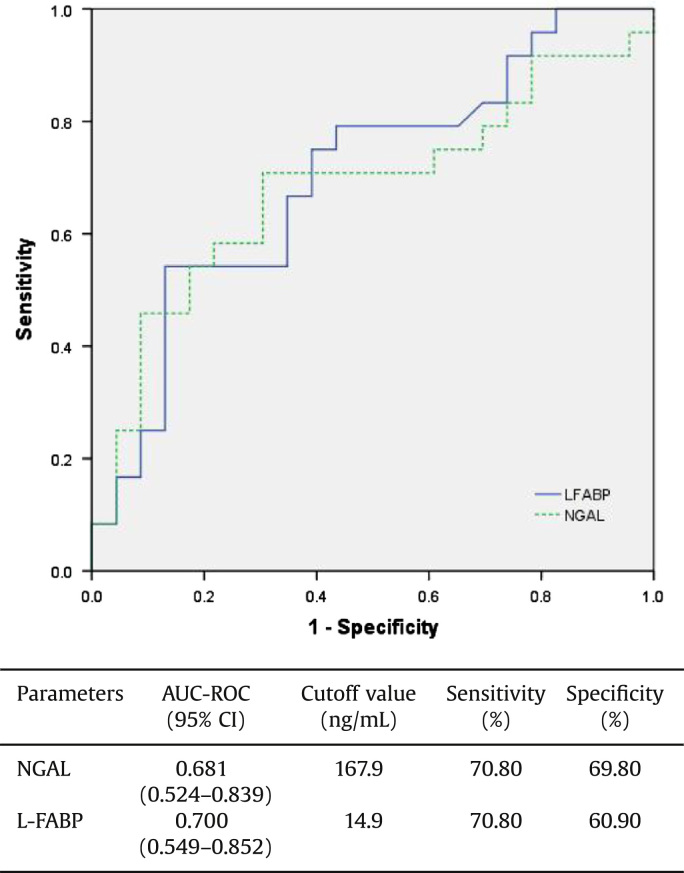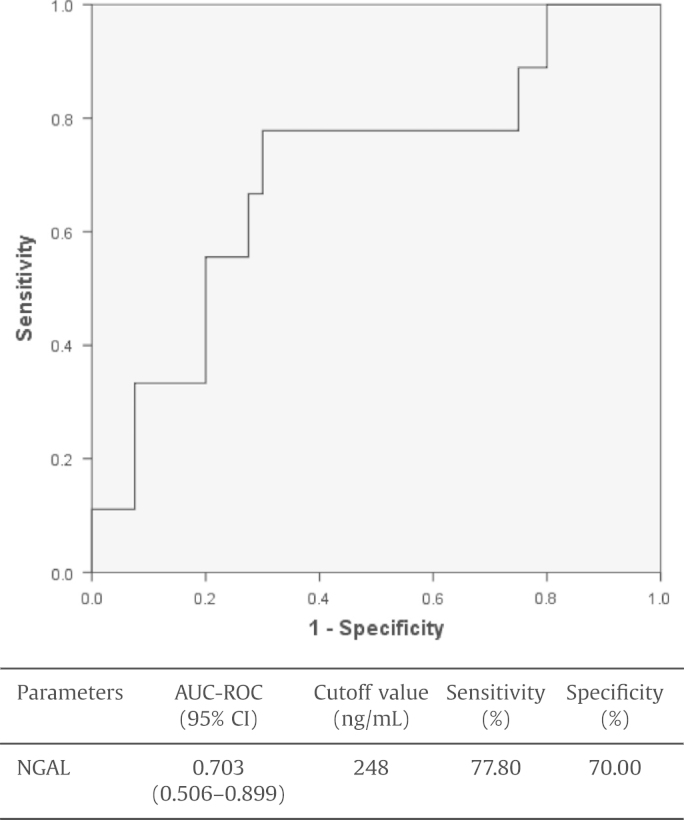1. Bradley SE, Bradley GP. The effect of increased intra-abdominal pressure on renal function in man.
J Clin Invest 26:1947;1010ŌĆō1022.



2. Sugrue M, Jones F, Deane SA, Bishop G, Bauman A, Hillman K. Intra-abdominal hypertension is an independent cause of postoperative renal impairment.
Arch Surg 134:1999;1082ŌĆō1085.


3. Shu M, Peng C, Chen H, Shen B, Zhou G, Shen C, Li H. Intra-abdominal hypertension is an independent cause of acute renal failure after orthotopic liver transplantation.
Front Med China 1:2007;167ŌĆō172.


4. Mohmand H, Goldfarb S. Renal dysfunction associated with intra-abdominal hypertension and the abdominal compartment syndrome.
J Am Soc Nephrol 22:2011;615ŌĆō621.


5. Dalfino L, Tullo L, Donadio I, Malcangi V, Brienza N. Intra-abdominal hypertension and acute renal failure in critically ill patients.
Intensive Care Med 34:2008;707ŌĆō713.


6. Le Gall JR, Lemeshow S, Saulnier F. A new simplified acute physiology score (SAPS II) based on a European/North American multicenter study.
JAMA 270:1993;2957ŌĆō2963.


7. Lee RK. Intra-abdominal hypertension and abdominal compartment syndrome: a comprehensive overview.
Crit Care Nurse 32:2012;19ŌĆō31.

8. Malbrain ML. Different techniques to measure intra-abdominal pressure (IAP): time for a critical re-appraisal.
Intensive Care Med 30:2004;357ŌĆō371.


9. Kirkpatrick AW, Roberts DJ, De Waele J, Jaeschke R, Malbrain ML, De Keulenaer B, Duchesne J, Bjorck M, Leppaniemi A, Ejike JC, Sugrue M, Cheatham M, Ivatury R, Ball CG, Reintam Blaser A, Regli A, Balogh ZJ, Dū│Amours S, Debergh D, Kaplan M, Kimball E, Olvera C; Pediatric Guidelines Sub-Committee for the World Society of the Abdominal Compartment S. Intra-abdominal hypertension and the abdominal compartment syndrome: updated consensus definitions and clinical practice guidelines from the World Society of the Abdominal Compartment Syndrome.
Intensive Care Med 39:2013;1190ŌĆō1206.



10. Malbrain ML, Chiumello D, Pelosi P, Wilmer A, Brienza N, Malcangi V, Bihari D, Innes R, Cohen J, Singer P, Japiassu A, Kurtop E, De Keulenaer BL, Daelemans R, Del Turco M, Cosimini P, Ranieri M, Jacquet L, Laterre PF, Gattinoni L. Prevalence of intra-abdominal hypertension in critically ill patients: a multicentre epidemiological study.
Intensive Care Med 30:2004;822ŌĆō829.


11. Kim IB, Prowle J, Baldwin I, Bellomo R. Incidence, risk factors and outcome associations of intra-abdominal hypertension in critically ill patients.
Anaesth Intensive Care 40:2012;79ŌĆō89.


12. Santa-Teresa P, Munoz J, Montero I, Zurita M, Tomey M, Alvarez-Sala L, Garcia P. Incidence and prognosis of intra-abdominal hypertension in critically ill medical patients: a prospective epidemiological study.
Ann Intensive Care 2(Suppl 1):2012;S3



13. Malbrain ML, Chiumello D, Pelosi P, Bihari D, Innes R, Ranieri VM, Del Turco M, Wilmer A, Brienza N, Malcangi V, Cohen J, Japiassu A, De Keulenaer BL, Daelemans R, Jacquet L, Laterre PF, Frank G, de Souza P, Cesana B, Gattinoni L. Incidence and prognosis of intraabdominal hypertension in a mixed population of critically ill patients: a multiple-center epidemiological study.
Crit Care Med 33:2005;315ŌĆō322.


14. Bouchard J, Soroko SB, Chertow GM, Himmelfarb J, Ikizler TA, Paganini EP, Mehta RL; Program to Improve Care in Acute Renal Disease Study G. Fluid accumulation, survival and recovery of kidney function in critically ill patients with acute kidney injury.
Kidney Int 76:2009;422ŌĆō427.


15. Thakar CV, Christianson A, Himmelfarb J, Leonard AC. Acute kidney injury episodes and chronic kidney disease risk in diabetes mellitus.
Clin J Am Soc Nephrol 6:2011;2567ŌĆō2572.



16. Bagshaw SM, Laupland KB, Doig CJ, Mortis G, Fick GH, Mucenski M, Godinez-Luna T, Svenson LW, Rosenal T. Prognosis for long-term survival and renal recovery in critically ill patients with severe acute renal failure: a population-based study.
Crit Care 9:2005;R700ŌĆōR709.



17. Goldstein SL, Chawla L, Ronco C, Kellum JA. Renal recovery.
Crit Care 18:2014;301ŌĆō307.



18. De laet I, Malbrain ML, Jadoul JL, Rogiers P, Sugrue M. Renal implications of increased intra-abdominal pressure: are the kidneys the canary for abdominal hypertension?
Acta Clin Belg Suppl 62:2007;119ŌĆō130.

19. Vidal MG, Ruiz Weisser J, Gonzalez F, Toro MA, Loudet C, Balasini C, Canales H, Reina R, Estenssoro E. Incidence and clinical effects of intra-abdominal hypertension in critically ill patients.
Crit Care Med 36:2008;1823ŌĆō1831.


20. de Laet IE, Malbrain M. Current insights in intra-abdominal hypertension and abdominal compartment syndrome.
Med Intensiva 31:2007;88ŌĆō99.


21. Ostermann M, Philips BJ, Forni LG. Clinical review: biomarkers of acute kidney injury: where are we now?
Crit Care 16:2012;233ŌĆō245.



22. Srisawat N, Murugan R, Lee M, Kong L, Carter M, Angus DC, Kellum JA; Genetic, Inflammatory Markers of Sepsis Study I. Plasma neutrophil gelatinase-associated lipocalin predicts recovery from acute kidney injury following community-acquired pneumonia.
Kidney Int 80:2011;545ŌĆō552.



23. Srisawat N, Wen X, Lee M, Kong L, Elder M, Carter M, Unruh M, Finkel K, Vijayan A, Ramkumar M, Paganini E, Singbartl K, Palevsky PM, Kellum JA. Urinary biomarkers and renal recovery in critically ill patients with renal support.
Clin J Am Soc Nephrol 6:2011;1815ŌĆō1823.



24. Yang HN, Boo CS, Kim MG, Jo SK, Cho WY, Kim HK. Urine neutrophil gelatinase-associated lipocalin: an independent predictor of adverse outcomes in acute kidney injury.
Am J Nephrol 31:2010;501ŌĆō509.


25. de Geus HR, Woo JG, Wang Y, Devarajan P, Betjes MG, le Noble JL, Bakker J. Urinary neutrophil gelatinase-associated lipocalin measured on admission to the intensive care unit accurately discriminates between sustained and transient acute kidney injury in adult critically ill patients.
Nephron Extra 1:2011;9ŌĆō23.



26. Yokoyama T, Kamijo-Ikemori A, Sugaya T, Hoshino S, Yasuda T, Kimura K. Urinary excretion of liver type fatty acid binding protein accurately reflects the degree of tubulointerstitial damage.
Am J Pathol 174:2009;2096ŌĆō2106.



27. Cho E, Yang HN, Jo SK, Cho WY, Kim HK. The role of urinary liver-type fatty acid-binding protein in critically ill patients.
J Korean Med Sci 28:2013;100ŌĆō105.



28. Doi K, Negishi K, Ishizu T, Katagiri D, Fujita T, Matsubara T, Yahagi N, Sugaya T, Noiri E. Evaluation of new acute kidney injury biomarkers in a mixed intensive care unit.
Crit Care Med 39:2011;2464ŌĆō2469.







 PDF Links
PDF Links PubReader
PubReader Full text via DOI
Full text via DOI Download Citation
Download Citation Print
Print
















